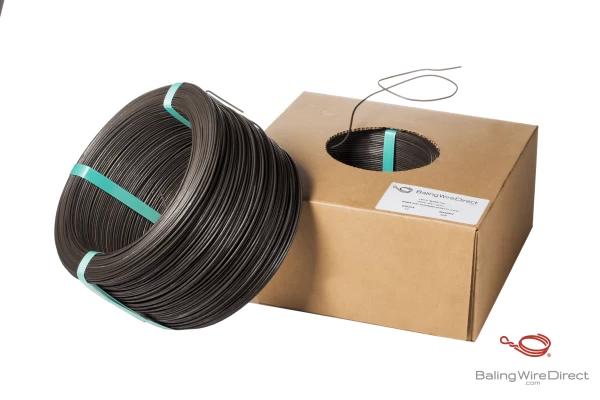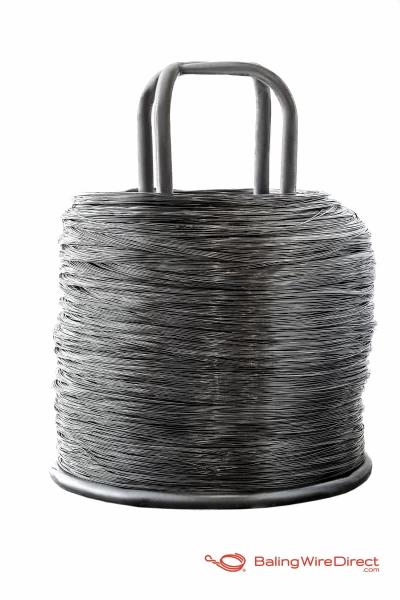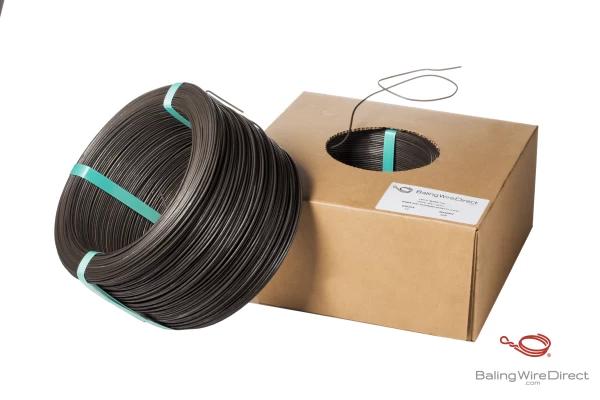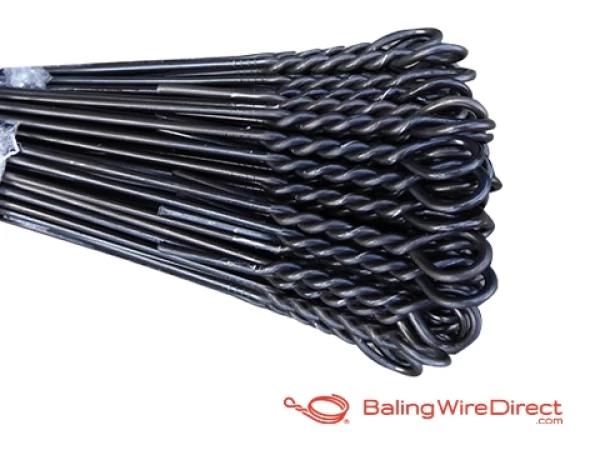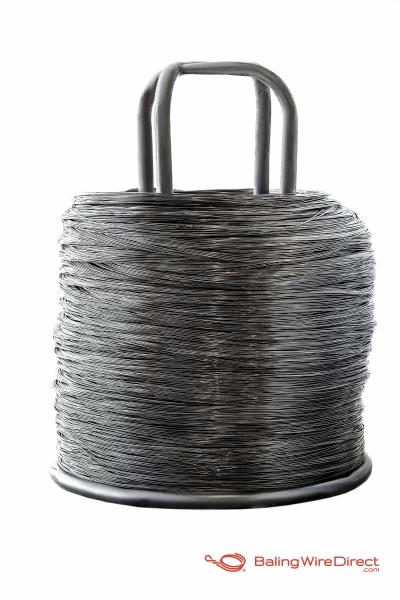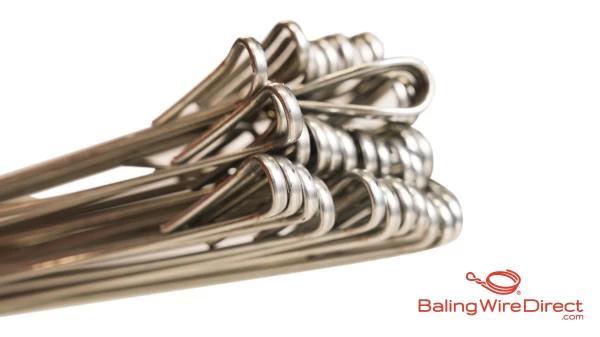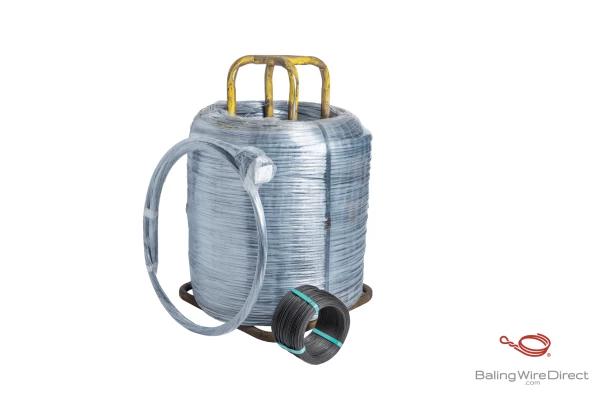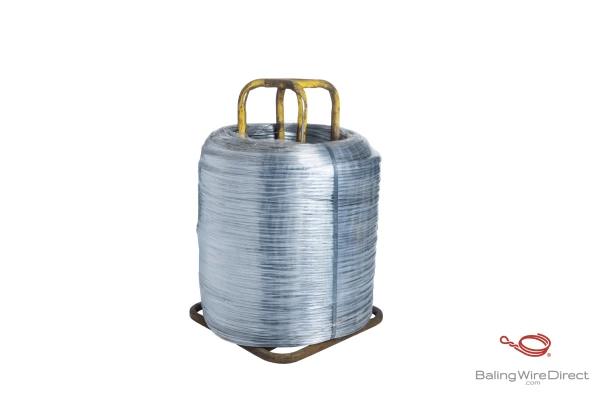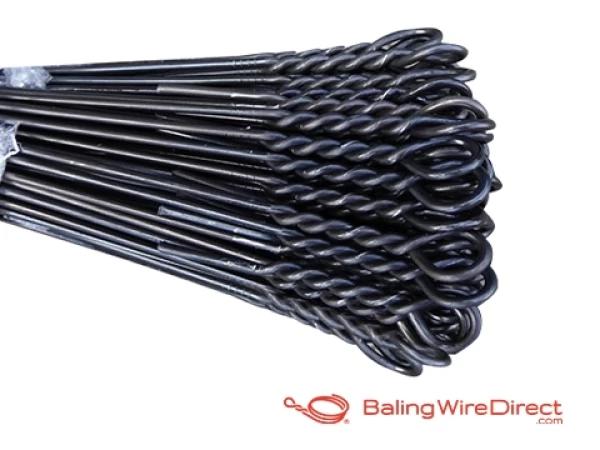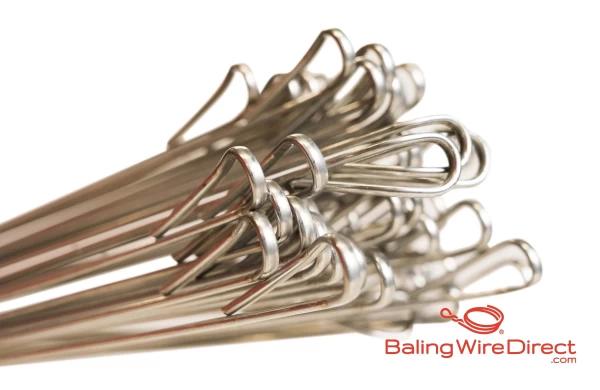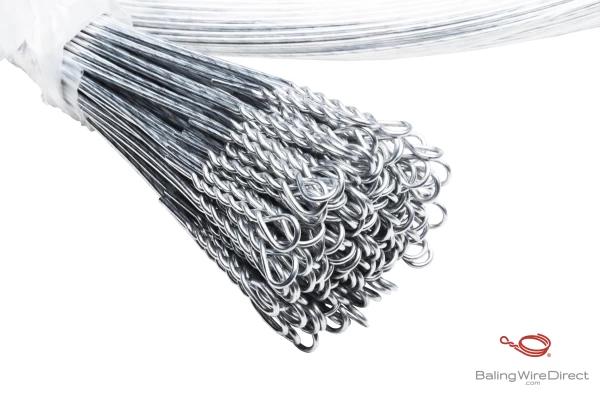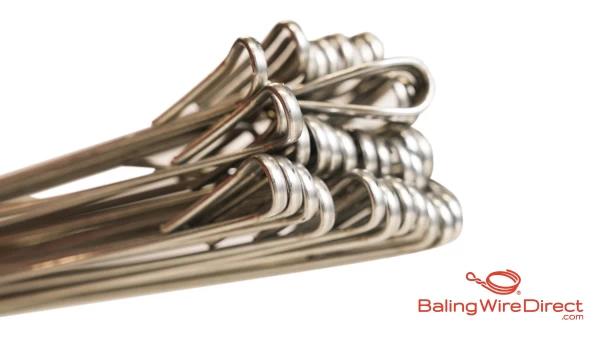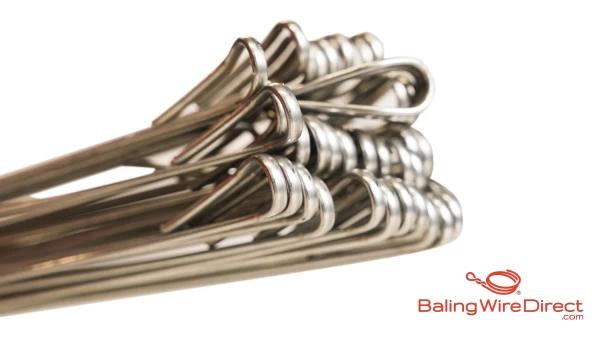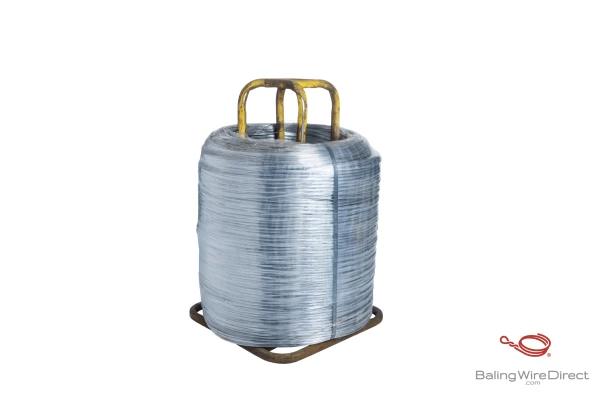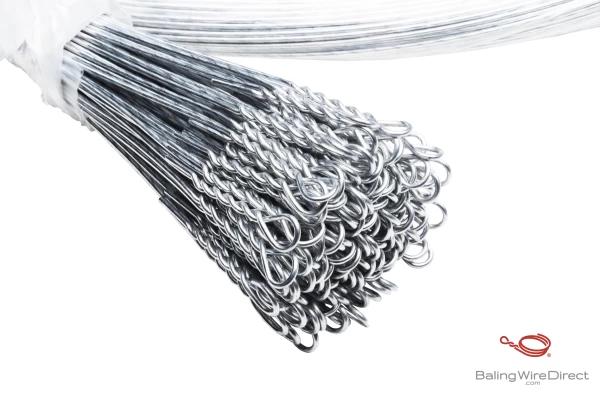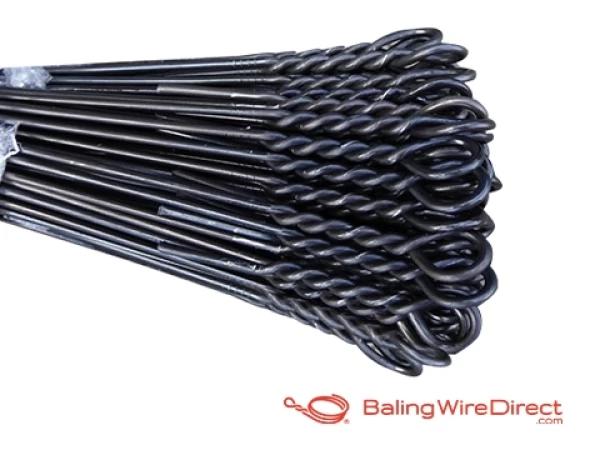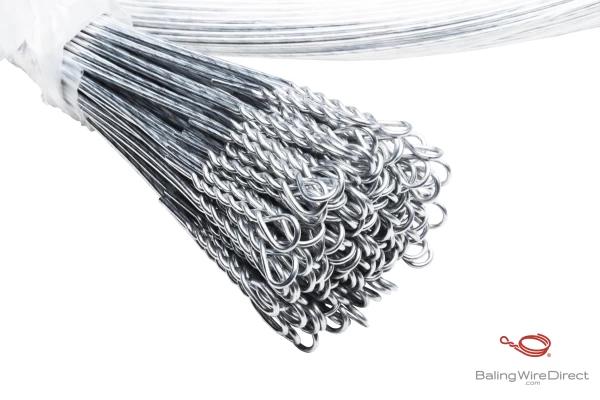Baling wire for recycling mixed office paper
According to the EPA, 67.4 million tons of paper waste was generated in 2018, which included large quantities of mixed office paper. Baling Wire Direct supplies critical baling wire products to the mixed office paper recycling industry.
Environmental solutions for recycling operations
Baling wire remains vital for the smooth functioning of recycling companies that handle office paper, cardboard, and other recyclables.
We empower the paper recycling process through high-quality baling wire products such as box wire, stem wire, and bale ties in a variety of finishes.
Recycling facilities rely on our high-quality baling wire products for baling office paper and cardboard.
Mixed office paper recycling market forecast
The market forecast for the mixed office paper recycling industry indicates a steady growth trajectory. The global waste paper recycling market, which includes mixed office paper, was valued at $43.51 billion in 2022 and is expected to grow at a compound annual growth rate of 4.8%. This growth rate suggests that the market could reach a value of approximately $60.42 billion by 2029.
The paper recycling market, in general, is also anticipated to rise at a considerable rate between 2023 and 2030. This growth is driven by the rising adoption of strategies by key players in the recycling market and the increasing demand for environmentally friendly processes, such as recycling paper.
What is a paper baler?
A paper baler is a machine that compresses paper products such as office paper, mixed paper, and cardboard into compact bales. These bales are then easy to handle, transport, and store, which is essential for recycling centers and businesses that generate large amounts of paper waste.
The baling process typically involves using a hydraulic ram that exerts pressure on the paper, which is then bound with baling wire. Vertical balers and horizontal balers are common types of balers used for this purpose.
Vertical balers apply downward force to create the bales and are suitable for smaller volumes of recyclable materials, while horizontal balers can handle larger volumes and feature a conveyor system to automate the feeding process. The use of a baler helps reduce disposal costs and can generate revenue from the sale of the recycled materials.
The mixed office paper recycling process
The process of recycling mixed office paper involves several steps:
- Collection. The process begins with the collection of mixed office paper from sources such as offices, schools, or community curbside programs.
- Sorting and transportation. After collection, the paper is transported to a materials recovery facility where it is sorted into different grades and contaminants are removed.
- Shredding and pulping. The sorted paper is then loaded into a pulper, which is essentially a large blender. Here, the paper is mixed with water and other ingredients, then churned and broken down into small fibers. Non-paper elements like tape, labels, and staples are screened out during this process.
- Cleaning and screening. The resulting slurry of fibers is further screened for cleaning. This step may involve a flotation process to remove inks and other contaminants.
- Drying and rolling. The cleaned pulp is then dried and formed into rolls of paper, creating newly recycled paper.
The specific steps can vary depending on the quality of the recovered paper and the specific requirements of the recycling facility.
Benefits of recycling mixed office paper
Mixed office paper recycling offers many benefits. Notably, it:
- Helps reduce waste disposal costs, as the paper is removed from the waste stream.
- Generates revenue from the sale of the recycled paper and reduces labor costs associated with the handling of paper during waste processing.
- Reduces greenhouse gas emissions and requires less energy and water compared to creating new paper products from trees.
- Improves workplace safety and neatness, and reduces fire hazards due to temporary storage of paper.
- Contributes to the reduction of energy and water consumption, and decreases the need for disposal, thus saving landfill space.
Challenges of recycling mixed office paper
Recycling mixed office paper presents several challenges that can impact the efficiency and effectiveness of the recycling process:
- Mixed office paper often contains contaminants such as food residues, plastic, and metal staples.
- Office paper needs to be separated from other waste, which can be a labor-intensive and costly process.
- Mixed paper often contains a variety of paper types and grades, some of which may not be suitable for recycling into high-quality paper products.
- The value of mixed paper as a recyclable commodity can fluctuate, affecting the economic viability of recycling.
Educating clients on proper recycling practices is a significant challenge. Many people are unaware of what can and cannot be recycled, leading to increased contamination and inefficiencies in the recycling process.
Best baling wire for mixed office paper
The best baling wire products for use in mixed paper recycling depend on several factors, including the type of baler used and the specific requirements of the paper recycling process:
- For mixed and office paper, high bale densities are crucial to maximize baling, storage, and shipping efficiency, which means a hi-tensile wire is often needed to safely secure bales.
- Black annealed baling wire is also a popular choice for the recycling industry because it works with a wide range of materials, including paper, cardboard, and mixed waste. It is flexible, easy to use, and strong, making it suitable for both manual and automatic balers.
It is important to choose the right tensile strength to withstand the pressure of baling and to consider the spool size based on the frequency of use, the size of the material being baled, and the type of baler machine being used.
Our recycling baling wire sizes
We offer wire suitable for baling mixed office paper in a wide variety of sizes. Our products are compatible with a range of baling machinery, including vertical and horizontal balers.
Gauge is the standard way of sizing baling wire for recycling. Wire gauge is inversely related to diameter, meaning that a smaller wire diameter corresponds to a higher gauge wire.
- Our hi-tensile galvanized wirecomes in 11 and 12 gauge.
- Our regular galvanized wire comes in 11, 12, 13, and 14 gauge.
- Our black annealed baling wire comes in 9, 10, 11, and 12 gauge.
- Our single loop bale ties and double-loop bale ties come in 9, 10, 11, 12, 13, and 14 gauge (with half sizes available in select products).
Check out our baling wire gauge guide for more information on wire sizes.
Mixed office paper baling wire for sale
We make a wide range of mixed office paper baling products. Order bulk quantities of bale ties, box wire, or stem wire. Click on any category to learn more.
Single loop bale ties
Choose from black annealed or galvanized finish
Double loop bale ties
Choose from bright or galvanized finish.
Annealed wire (box)
Annealed for ductility. 50 and 100 lb boxes.
Annealed wire (stem)
Annealed for ductility. Average 1330 lbs per stem
Galvanized stem wire
Class 3 hot-dip galvanization for long-lasting performance
Hi-ten carrier wire
High tensile strength for demanding applications.
References
EPA. (2023, November 22). Paper and Paperboard: Material-Specific Data | US EPA. Environmental Protection Agency (EPA). Retrieved January 12, 2024, from https://www.epa.gov/facts-and-figures-about-materials-waste-and-recycling/paper-and-paperboard-material-specific-data
Maximize Market Research. (2024, 01 12). Waste Paper Recycling Market: Analysis and Forecast (2023-2029). maximize market research. Retrieved January 12, 2024, from https://www.maximizemarketresearch.com/market-report/global-waste-paper-recycling-market/84320/
Further Reading
What are the different classes of galvanized wire?
View DetailsDoes black annealed wire rust?
View DetailsUnderstanding the AWG size chart
View DetailsWhat is galvanization?
View DetailsHow is baling wire made?
View Details
